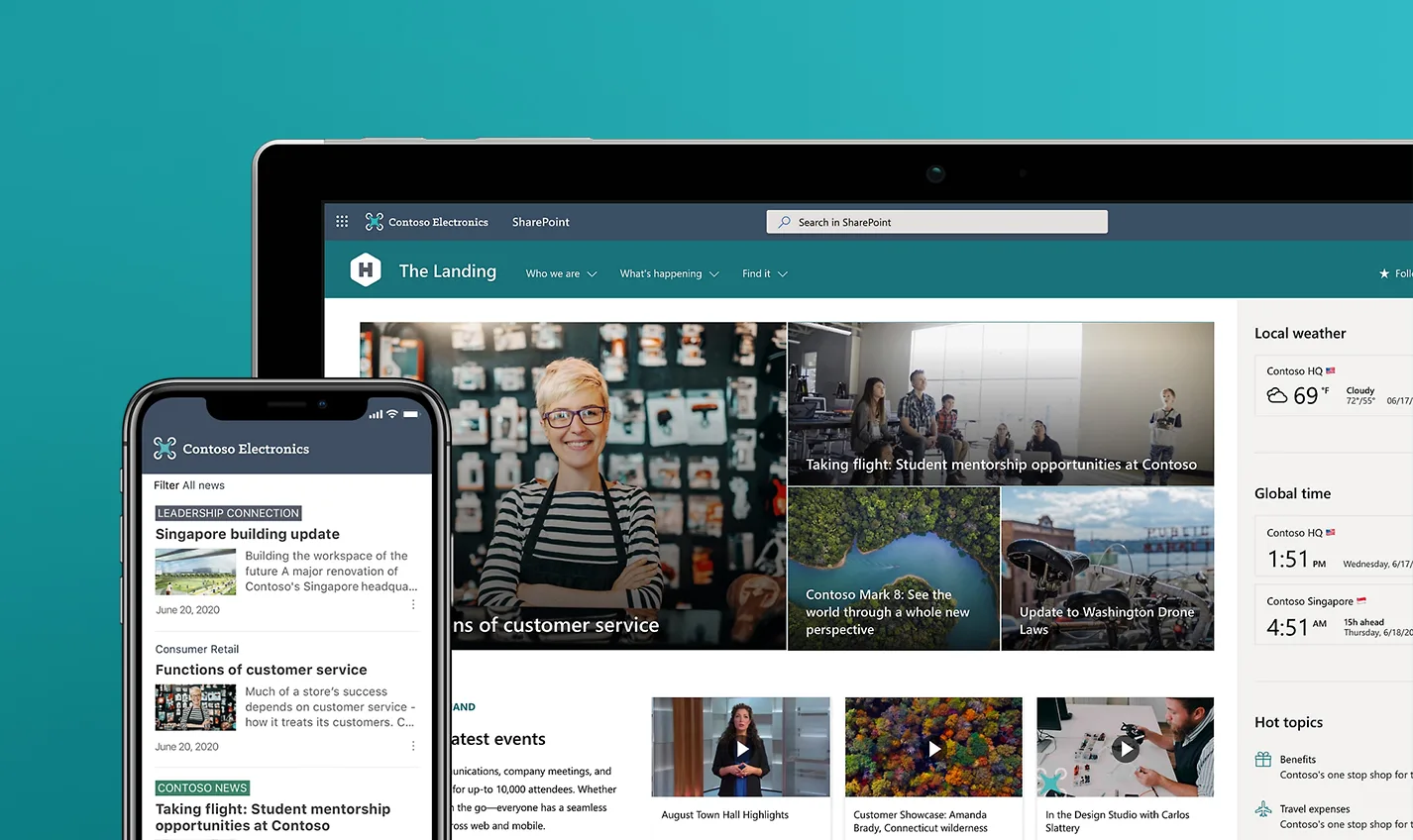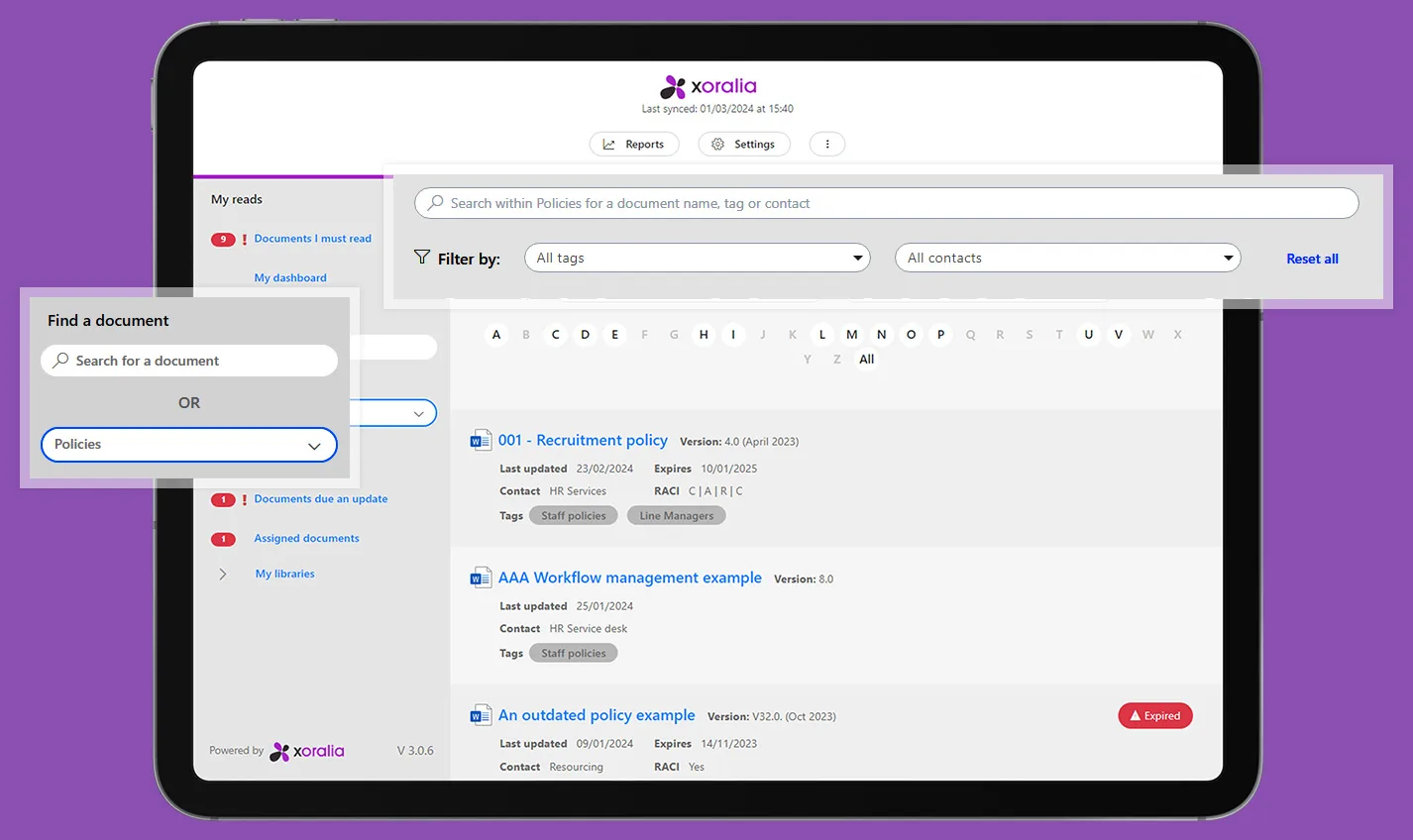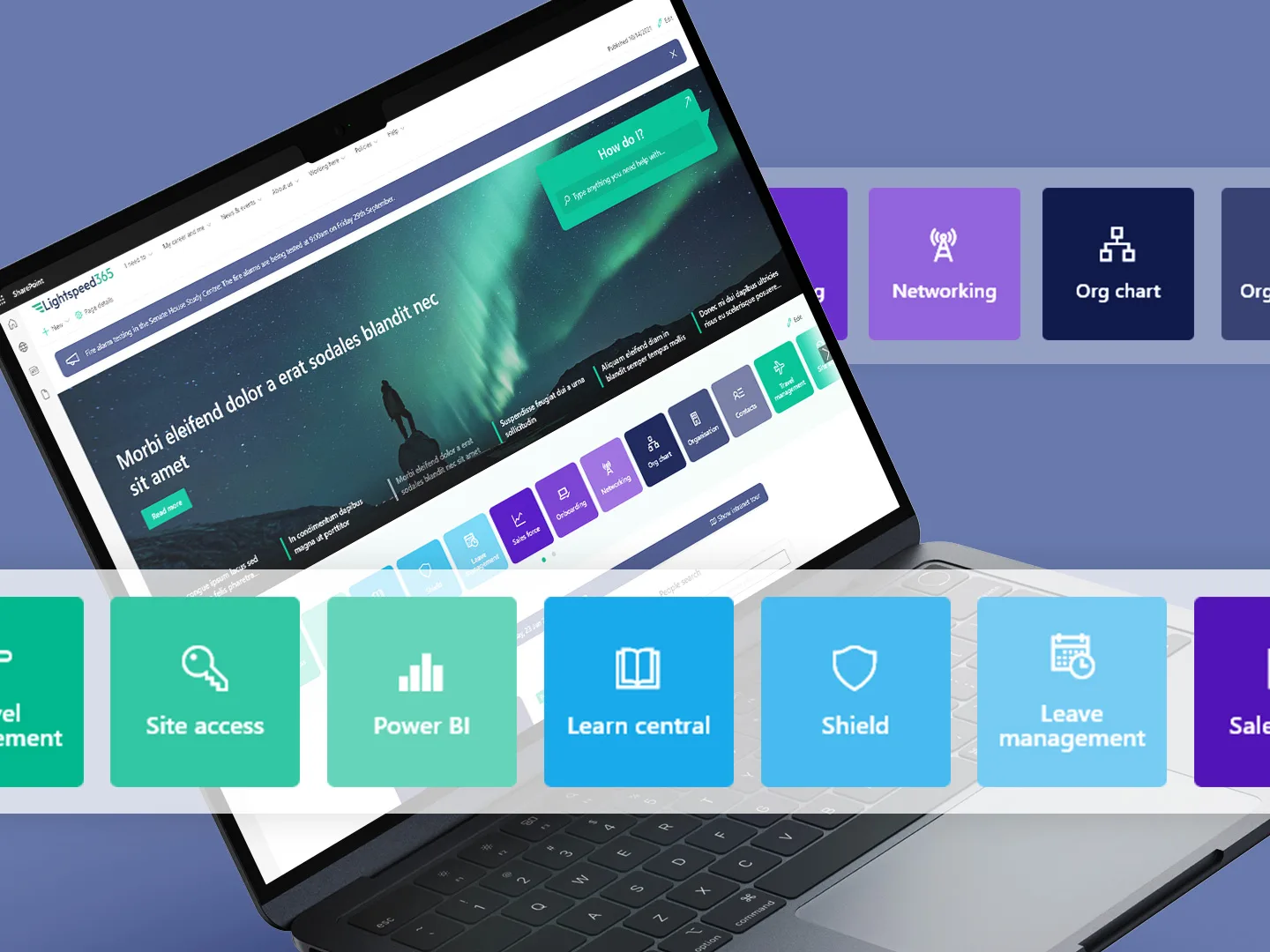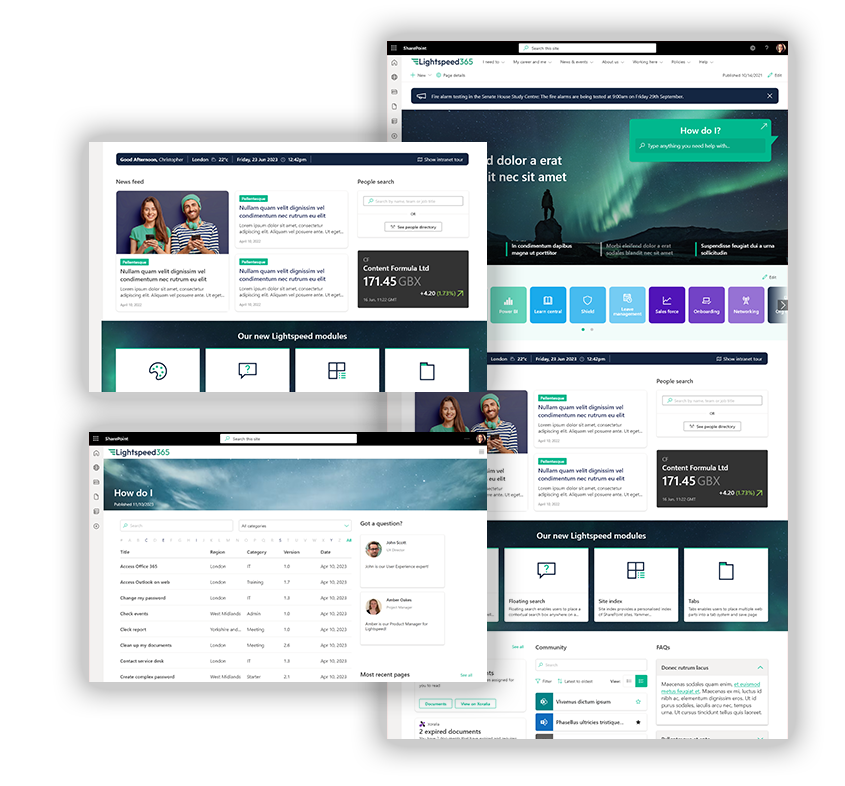Every few months, we come across someone telling us that intranets are dead or are no longer relevant. As we start 2022, this is very much not the case. Organisations from small charities with under a hundred staff through to global household brands with a workforce of hundreds of thousands still choose to invest in intranets. Intranet software providers and intranet consultancies are also thriving, and Microsoft continues to extend the power of SharePoint to make it easier to create an enterprise intranet. Modern intranets are very much here to stay, and are a central pillar of the wider digital workplace.
One of the reasons that misunderstandings about the value of intranets persist is that some commentators aren’t referring to modern intranets. In the past, many intranets have been poor, with low adoption, bad findability and stale content; unfortunately, these issues are still prevalent today due to lack of TLC from intranet owners. Such repositories of out-of-date and hard-to-find content, often with a poor user experience, have given intranets a bad name.
Modern intranets are actually vibrant and valuable, come integrated with digital workplace tools, provide strong content and communications, evolve with employee need and are driven by user feedback. They are essential in supporting employees everyday work as they get things done.
If you have a modern intranet that is delivering value, that’s great. But this year is no time to rest on your laurels. Modern intranets can always improve and extend their success. If you’re thinking about some 2022 goals for your intranet, we’ve listed some of our thoughts on what you should focus on.
Here are seven 2022 objectives for your modern intranet.
1 Deliver on your modern intranet strategic objectives (or revisit your strategy)
A great ambition for 2022 is to make sure you are delivering on your original intranet strategic objectives. But do you even know what your modern intranet strategic objectives are? Do you have a clear intranet strategy, or at least a strategy that has been reviewed more recently than when you originally set up your modern intranet?

It’s always good to revisit your intranet strategy to make sure it is relevant, provides value and is moving forwards in alignment with wider strategic goals. If your strategy is no longer relevant, you may need to redraft or reconsider your strategy, which might require further discovery or user research. Whether working towards a new strategy or reviewing your old one, it can be an excellent frame of reference and starting point for working out your modern intranet’s priorities and objectives going into 2022.
2 Make your content better
Having good quality content is essential for your intranet; it drives both value and employee trust, therefore underpinning adoption. Every piece of content on your intranet should be:
- Purposeful
- Accurate
- Timely
- Engaging
- Findable
- In accordance with publishing standards.
This is hard to achieve when you have a decentralised publishing model, which is the norm for most intranets. Unless they have been freshly launched, the vast majority of modern intranets have room to improve their content.

In 2022, a great commitment to make for your modern intranet is improving your content. Unless all your content creation and publishing is centralised, this can only be done by doubling down on content governance. This usually entails a variety of approaches and measures, including defining your publishing standards, establishing automated content reviews for authors, conducting annual site reviews involving the central intranet team, providing more training and resources across your content community and establishing approval workflows where necessary. Executing a combination of these tactics reaps rewards, improving adoption and increasing trust.
3 Be the front door to your wider digital workplace
A key role of a modern intranet is to provide the entry point into the wider digital workplace. Making the intranet a personalised front door and single pane of glass to the enterprise’s portfolio of applications is an excellent use case which is popular with employees. If it isn’t already, making your intranet just that front door should be a strong priority for any intranet team.
Again, there are multiple ways to achieve this, including creating a central directory of apps that employees choose from to create personalised links, integrating other platforms and apps to enable simple transactions to be completed or data to be viewed, or enabling a navigation or search that allows users to reach other digital workplace tools and content.
4 Improve findability
Poor search and findability is often the number one complaint from intranet users. One of a modern intranet’s key roles is to help employees find the content, apps and people they need to carry out their role. But all too often, finding what they need is more painful than it should be, resulting in wasted time and effort.

Even strong modern intranets usually have room for improvement when it comes to search and findability; moving the needle on this important aspect of a modern intranet is a great new year’s resolution to make. Here, a coordinated combination of approaches is needed. Findability is not just about search, but also about the content you’re searching for, as well as your information architecture.
Approaches to consider include tagging your content, training content authors to make their content more findable, regularly analysing search metrics, reducing the amount of content, adding best bets, re-jigging your intranet navigation and even creating directories of information such as apps and sites.
5 Support a better employee experience
The past couple of years have seen a real focus on employee experience for intranet and digital workplace teams. Products like Microsoft Viva are firmly positioned as improving employee experience, and some intranet software is being branded as employee experience platforms (EXPs).

Intranets have a role to play in improving employee experience through content, features and services. They can increase productivity, save time, reduce frustration and help employees get things done, as well as facilitating learning, supporting well-being and providing access to data that aids better decision-making. They can also engage the workforce by driving connections and community.
Employee experience is a wide term, so one of the secrets of ensuring your intranet promotes better employee experience in 2022 is to actually work out what this means to you and your employees. Here, having conversations with users, inviting feedback from employees and examining the results of your employee engagement survey, as well as working with partners in HR and learning, can help yield results while simultaneously showing that you are committed to improving your workforce’s experience.
6 Support hybrid and remote working
Hybrid working and how best to support it was a huge issue during 2020 and 2021, and will continue to be throughout 2022, especially as organisations start to encourage the return to the office and are figuring out the longer-term future of hybrid working.
As core channels in the digital workplace, modern intranets play a major role in supporting hybrid working, for example, through providing content on the best tools to use for new ways of working. Integrations can help with the return to the office, co-ordinating communication between those on site and those working remotely. Intranets also provide a forum for employees to air their opinions about hybrid working, which is crucial while it’s still a fast-moving area where listening is critical. We think hybrid work support will be a strong priority for any modern intranet this year.
7 Continually improve
Continual improvement is a concept that many intranet teams aspire to, but which can be hard to put into practice. Committing or recommitting to continual improvement in 2022 (and following through with it) will certainly reap value in terms of adoption, impact and perceptions of value.
Continual improvement is usually underpinned by multiple approaches, including:
- Using measurement to inform changes, and then re-measuring to ascertain the relative impact
- Using agile methodologies and sprints to drive a series of iterative improvements
- Committing to a roadmap of new features and content areas
- Seeking employee feedback and acting on it; this often means creating feedback loops to drive changes across your intranet
- Driving a mindset of continual improvement in the core intranet team, but also across wider intranet roles and your content community.
Improving your intranet in 2022
Modern intranets have an important role to play in 2022, driving strategic value for your organisation and assisting employees in their day-to-day work. If you need help meeting your intranet objectives in 2022, or deciding what those priorities should be, then get in touch!
Modern intranets are never complete. There’s always more to do to improve the user experience, drive adoption, make the content better, add new features, drive integrations and make it more accessible. One of the reasons for this is that modern intranets perform such a wide variety of functions and incorporate many features – there is always more you can achieve.
It is also because intranets continue to evolve, ready to absorb new technology advances such as generative AI or the latest tools that have been released across Microsoft 365. Intranets also change over time as employee needs and expectations change too, and new organisational requirements emerge such as supporting hybrid working, or dealing with changes triggered by mergers and restructures.
But with so many potential options to improve an intranet, often the question for intranet teams is “where should I start?” In this post we’re going to explore some common objectives to improve your modern intranet that we commonly find our customers and industry contacts want to achieve.
Modern intranets are alive and kicking
Before we dive into the objectives, it’s important to bust some of the myths around modern intranets. There are some doubters who say that intranets are no longer relevant or that they are even “dead”. Occasionally it’s something you find in marketing material from vendors wanting to sell alternative solutions, but also unfortunately sometimes you hear it from stakeholders inside organisations. Believe us, it is nonsense and is often because a stakeholder has an outdated and uninformed view of intranets as just static repositories of content, that is about fifteen years out of date.
Intranets are very much alive and kicking, despite being on part of the workplace technology landscape for over 25 years. Virtually every large organisation has an intranet, some having invested millions of dollars over the years. Microsoft continues to position SharePoint as “your mobile, intelligent intranet.” And intranets continue to outlive every predicted technology wave that threatens to kill them off for good such as social networking tools, Microsoft Teams and mobile employee apps. One of the reasons they have survived is because they continue to absorb new features and capabilities, and have provide flexible, scalable and adaptable to both employee and organisational needs.
At the same time, its important to acknowledge that many intranets are not great and are generally not a solution that employees love. So, let’s explore some objectives to aim for to make your intranet better in 2024.
Modern intranets are never complete. There’s always more to do to improve the user experience, drive adoption, make the content better, add new features, drive integrations and make it more accessible. One of the reasons for this is that modern intranets perform such a wide variety of functions and incorporate many features – there is always more you can achieve.
It is also because intranets continue to evolve, ready to absorb new technology advances such as generative AI or the latest tools that have been released across Microsoft 365. Intranets also change over time as employee needs and expectations change too, and new organisational requirements emerge such as supporting hybrid working, or dealing with changes triggered by mergers and restructures.
But with so many potential options to improve an intranet, often the question for intranet teams is “where should I start?” In this post we’re going to explore some common objectives to improve your modern intranet that we commonly find our customers and industry contacts want to achieve.

Modern intranets are alive and kicking
Before we dive into the objectives, it’s important to bust some of the myths around modern intranets. There are some doubters who say that intranets are no longer relevant or that they are even “dead”. Occasionally it’s something you find in marketing material from vendors wanting to sell alternative solutions, but also unfortunately sometimes you hear it from stakeholders inside organisations. Believe us, it is nonsense and is often because a stakeholder has an outdated and uninformed view of intranets as just static repositories of content, that is about fifteen years out of date.
Intranets are very much alive and kicking, despite being on part of the workplace technology landscape for over 25 years. Virtually every large organisation has an intranet, some having invested millions of dollars over the years. Microsoft continues to position SharePoint as “your mobile, intelligent intranet.” And intranets continue to outlive every predicted technology wave that threatens to kill them off for good such as social networking tools, Microsoft Teams and mobile employee apps. One of the reasons they have survived is because they continue to absorb new features and capabilities, and have provide flexible, scalable and adaptable to both employee and organisational needs.
At the same time, its important to acknowledge that many intranets are not great and are generally not a solution that employees love. So, let’s explore some objectives to aim for to make your intranet better in 2024.
1. Refresh your strategy and deliver on new goals
Many teams develop a strategy when they are first creating a new intranet. This is (hopefully) based on user research and engagement so that the intranet is created based on a thorough understanding of employees, their needs and their pain points. While that initially helps deliver a user-centric intranet, the strategy is not always refreshed to reflect new and emerging needs. This means that a strategy can become less relevant as it ages.
If you haven’t checked in with your users and stakeholders recently its worth doing so in order to refresh your strategy and define your specific objectives. Undertaking some user research – even if it relatively modest – can help you to keep your intranet relevant and user-centric.
2. Make your content better by establishing the right governance
Having good quality content is essential for every modern intranet, supporting adoption, value and trust. Every piece of content should be:
- Purposeful
- Accurate
- Timely
- Engaging
- Findable
- On-brand
- In accordance with publishing standards.
Virtually every modern intranet has room for improvement when it comes to its content, particularly when there is a decentralised publishing model when it can be hard to maintain standards.
Having an objective to improve your content and then introducing governance to help keep it that way brings tangible benefits to your intranet with everything from renewed trust to improved findability.
Typical activities to improve content and introduce governance include:
- Having a content audit and removing any old, out-of-date content.
- Introducing content and site review processes using automation where possible so authors review the pages they are responsible for on a regular basis.
- Introducing and defining new publishing standards.
- Retraining content contributors to improve their content.
- Creating a self-serve resource to support editors and authors.
- Revisiting intranet site templates to support good standards.
- And more!
3. Evolve towards being an ‘everything intranet’
Here at Content Formula we’ve recently been talking about the “everything intranet”, a new concept for intranets that guarantees adoption, engagement and value, and an intranet that employees final love.
The everything intranet is a vision for how the modern intranet should now be built. It provides everything an employee needs for their working day – finding information and completing tasks through a consistent, easy-to-use and hyper-personalized experience.
There are various different ways to move towards being an everything intranet, but one of them is to deliver meaningful integrations with leading enterprise systems so that employees can view data and complete simple transactions, without leaving the intranet. It can also involve deploying solutions based on Microsoft 365 such as LMS365 (a learning platform) and Xoralia (a policy management solution) that integrate seamlessly with the intranet to be effectively one experience.
Webinar
Lightspeed365 makes it easy to create a beautiful and powerful employee intranet in SharePoint and Teams.
4. Improve your findability
Perhaps the most repeated complaint about the intranet is that they can’t find what they need. A modern intranet should aways help find the content, people, apps, document, information and answers they need to help them get things done and carry out their role. This saves time but also reduces frustration – there’s nothing worse than not being able to find what you need.
Employees find that they need through search, navigation and also browsing particular areas. Even in the most advanced intranets there are always improvements that can be made to improve findability. The good news is that there a myriad of practices that will make findability better, some of which are actually more to do with your content rather than say your search.
Tactics to improve findability on your intanet during 2024 could encompass one or more of the following:
- Revisiting your information architecture and navigation so it is more user-centred, for example based around tasks, using terms familiar to your employees.
- Removing old and irrelevant content so it does not clutter the search.
- Training your content authors to better tag their content to aid filtering and improved search results.
- Gathering search feedback and analysing search metrics to make iterative improvements.
- Using best bets (promoted results) for common search terms.
- Making some custom changes to improve the search experience or integrating results from other repositories.
- Creating structured collections of knowledge so people can find what they need, for example creating a central policy library using a solution like Xoralia.

5. Support productivity and efficiency
One of the jobs of a good intranet is to improve productivity and support efficiency by helping employees get things done and complete tasks quickly and efficiently. However, not all intranets do this as well as they could do and there are usually certain improvements that can be made to help aid task completion.
Aiming to optimise the intranet to improve productivity can be done in several different ways.
One way is to provide “how to” self-service content to help employees complete tasks without having to ask different support functions questions, relieving pressure on busy help desks. A popular format for this is to create a library of “How Do I” pages that provides one source of truth for informative, process-led content in areas such as HR and IT. Providing resources on different resource hubs that also points users to the right contact can also make a big difference.
Another way is to use integrations to help employees complete simple transactions without even leaving the intranet – see more detail above on this in our point about the “everything intranet”. This can raise productivity not only by saving time but by reducing context switching which is inefficient and impacts user focus.
Using an app launcher web part where employees can easily reach all the other tools and apps they need across the wider digital workplace can also be very useful, while improving the findability will always save time in helping employees get things done.
Finally, there are also opportunities to improve specific processes using workflow, automation and more, again all delivered via the intranet. Collectively all these approaches will positively impact both efficiency, productivity and even costs.

6. Drive continual improvement by bridging feature gaps
Intranets are never finished and those that thrive are often driven by continual improvement through a series of incremental additions dictated by ongoing user feedback. One of the great things about SharePoint is that it is straightforward to add new web parts, so you can extend the features of your intranet. There are some excellent web parts that are available out of the box with SharePoint Online. However, there are also some significant feature gaps too.
Our Lightspeed365 intranet product expands the web parts available for your SharePoint intranet. You can drive the improvement required for your intranet to support adoption, value and more through adding a wide variety of different web parts.
Lightspeed365 makes it easy to create a beautiful and powerful employee intranet in SharePoint and Teams.

7. Open up intranet access through Microsoft Teams
Many employees spend their day in Microsoft Teams and it can be very useful for them to be able to access a SharePoint intranet through Teams, meaning intranet content is available more directly in the flow of work. Frontline employees can also view the intranet through the mobile Teams app.
Delivering the intranet through Microsoft Teams is a great way to add value to any modern intranet. This is usually achieved using Viva Connections, which is bundled free with your Microsoft 365 subscription.

Improving your intranet during 2024
There are multiple ways to improve your intranet during 2024. We’ve provided some popular suggestions for high-level objectives that we know can make a difference, but there are many others. The main point is to do something. Technology, organisations and employees never stand still. Inevitably this means that if your intranet stands still it will start to decline in value.
If you’d like to discuss how you can refresh your intranet in 2024 then get in touch!

